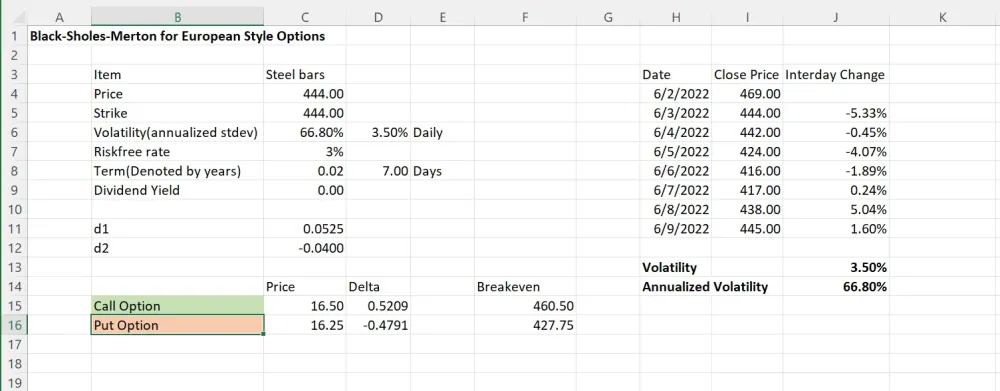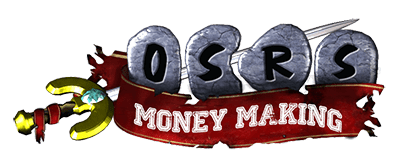Your cart is empty
Understanding OSRS Items by Price: A Comprehensive Guide

Understanding the pricing of items in Old School RuneScape (OSRS) is crucial for players looking to maximize their in-game wealth and trading strategies. Prices can fluctuate based on various factors, impacting both casual players and serious traders. This guide will delve into the basics of OSRS item pricing and explore the role of the Grand Exchange in determining the value of these items.
The Grand Exchange is the primary marketplace in OSRS where players can buy and sell items. It serves as a dynamic hub for trading, with prices influenced by supply and demand principles. When a player lists an item for sale, they set a price based on their perception of the item’s value. However, this price can drastically change based on the volume of transactions occurring at any given time.
Prices at the Grand Exchange are updated frequently, reflecting real-time market conditions. When demand for a particular item increases, perhaps due to a new update or a popular event, prices tend to rise as more players compete to purchase the item. Conversely, if too many players are selling the same item, the market can become saturated, leading to a decrease in price. This fluctuation creates a vibrant economy within the game, making it essential for players to stay informed about current trends.
Moreover, the Grand Exchange employs a system of buy and sell offers. When a player places a buy offer at a certain price, it remains active until fulfilled by a seller. If the demand is high, this can lead to a spike in the buying price. On the other hand, if a player continuously undercuts the market price to sell quickly, it can drag the average price down, affecting all sellers of that item.
Additionally, external factors such as game updates, player events, or even real-world events can influence item prices. For example, the introduction of new content might increase the demand for specific items, while the removal of certain items from the game can lead to scarcity and price surges. Players should also be aware of the impact of seasonal events; during holidays or special occasions, some items might see a temporary increase in value due to heightened interest.
Ultimately, understanding the Grand Exchange‘s influence on item pricing is vital for effective trading. Players who regularly check price trends and stay informed about market shifts can make more strategic decisions, whether they are buying, selling, or holding onto items. This knowledge not only enhances the gameplay experience but also enables players to accumulate wealth and obtain rare items more efficiently.
Top Items by Price: A Breakdown

Understanding the landscape of Old School RuneScape (OSRS) items by price can be quite enlightening. In this section, we’ll take a closer look at some of the top items and their market values, helping you navigate through the vast economy of the game.
Here are some of the most sought-after items, along with their approximate prices:
| Item | Price (in GP) |
|---|---|
| Twisted Bow | 1,800,000 |
| Scythe of Vitur | 1,500,000 |
| Infernal Cape | 1,200,000 |
| Dragon Claws | 1,000,000 |
| Arcane Spirit Shield | 900,000 |
These items are not only high in price but also carry significant utility in combat and other gameplay aspects. Prices fluctuate based on demand, availability, and updates in the game. Keeping an eye on these items can provide valuable insights into the current state of the OSRS economy.
Factors Affecting OSRS Item Prices
Item prices in OSRS are influenced by a variety of factors. Understanding these can give you an edge in trading and investing within the game. Let’s break down the primary factors that contribute to price changes:
- Supply and Demand: The basic economic principle of supply and demand plays a huge role. If an item is rare and highly desired, its price will naturally increase.
- Game Updates: New content releases, such as quests or items, can drastically shift the market. For example, if a new item is introduced that outperforms an existing one, the older item may drop in value.
- Player Activity: The number of players actively engaging with certain items can affect their prices. More players using a particular item can drive up demand.
- Market Trends: Keeping an eye on trends and player behavior can help forecast price changes. Items that are part of popular strategies tend to maintain higher prices.
- Inflation: Just like in real-world economies, inflation can affect item prices in OSRS. As more gold enters the game, the value of items can change.
By considering these factors, you can better understand the dynamics of the OSRS economy and make informed decisions when buying or selling items.
Tracking Price Changes Over Time
Understanding the price trends of items in Old School RuneScape (OSRS) is essential for both new and seasoned players. Prices can fluctuate due to various factors, including game updates, player demand, and market speculation. Here are some effective ways to track these changes:
- Price Tracking Websites: Utilize dedicated websites like OSRS Box or GE Tracker. These sites provide historical price data, allowing you to analyze trends over time.
- In-Game Graphs: The Grand Exchange interface in OSRS offers basic graphs that show price changes over the last 30 days. This can give you a quick snapshot of an item’s price trend.
- Community Forums: Engaging in community discussions on platforms like Reddit or the official OSRS forums can provide insights into item trends. Players often share their experiences and observations.
- Personal Spreadsheets: If you’re serious about tracking, consider creating a personal spreadsheet to log prices daily or weekly. This can help you identify patterns specific to the items you’re interested in.
By monitoring these price changes, you can make informed decisions on when to buy or sell items, ultimately maximizing your profits in the game.
Best Practices for Buying and Selling OSRS Items
Buying and selling items in OSRS can be a strategic endeavor. To ensure you get the best deals and maximize your in-game wealth, consider the following best practices:
- Research Before You Trade: Always check current market prices using reliable resources. This prevents you from overpaying or underselling.
- Set Alerts: Leverage price tracking tools that allow you to set alerts for specific items when they hit desired price points. This way, you can act quickly when a good opportunity arises.
- Buy Low, Sell High: Try to buy items when their prices are low, especially during times of low demand or right after game updates. Conversely, sell when the prices are high, capitalizing on market fluctuations.
- Diversify Your Inventory: Don’t put all your eggs in one basket. Diversifying your portfolio by investing in various items can help mitigate risks and increase potential profits.
- Be Patient: The market can be volatile. Sometimes, waiting for the right moment to sell can yield better profits than selling immediately.
By following these best practices, you’ll not only enhance your trading skills but also increase your overall enjoyment of OSRS.
Understanding OSRS Items by Price: A Comprehensive Guide
Old School RuneScape (OSRS) has a dynamic economy influenced by player trading, supply and demand, and various in-game events. Understanding item prices is crucial for effective trading and in-game strategy. This guide provides insights into how OSRS item prices are determined and how players can leverage this information.
Item prices in OSRS can fluctuate based on several factors:
- Supply and Demand: The basic principle of economics applies here; when more players want an item (high demand) and fewer are available (low supply), prices increase.
- In-game Updates: New content releases or changes to existing items can significantly impact prices. For example, the introduction of a new boss may raise the value of certain drops.
- Market Trends: Tracking trends over time can help players anticipate price changes. Certain items may rise or fall in value based on seasonal events or player interest.
- Player Activity: The number of players engaging in specific activities (like skilling or bossing) can affect the availability and pricing of items related to those activities.
One effective way to monitor prices is through the Grand Exchange, where players can see real-time price information. Additionally, using third-party tools or websites that track OSRS prices can provide historical data and trends.
| Item | Current Price (GP) | Trend (Last 30 Days) |
|---|---|---|
| Dragon Scimitar | 1,500,000 | ⬆️ Rising |
| Godsword Shard | 1,200,000 | ⬇️ Falling |
| Rune Platebody | 100,000 | ➡️ Stable |
In conclusion, understanding the pricing of OSRS items is essential for players looking to maximize their in-game wealth and make informed trading decisions. By staying updated on market trends and utilizing available tools, players can effectively navigate the OSRS economy.
